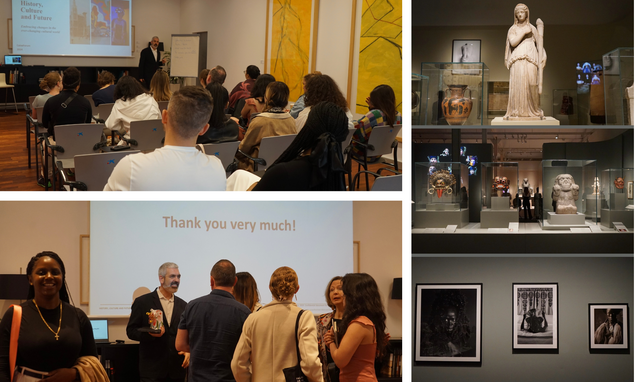March 15. Caixa Forum + lecture from Mr. Ignasi Miro
By Jaclyn Li
Established in 2002, CaixaForum Barcelona stands as an esteemed art museum and cultural hub within the vibrant cityscape, proudly owned by the not-for-profit banking foundation “la Caixa”. Guided by a noble mission to foster a more equitable society, and empower those most in need, la Caixa upholds values of trust, excellence, and social commitment. Its endeavors encompass five core pillars: the establishment of cultural centers, touring projects, digital initiatives such as participatory concerts and VR symphonies, the innovative CaixaForum+ app, and a forthcoming visual gallery slated to debut next fall.
Ranked as the second most visited museum in Barcelona in 2023, CaixaForum attracts over three million visitors annually. Our journey commenced with an exploration of the exhibition “VISITA COMENTADA: VENERADAS Y TEMIDAS” currently on view, delving into the theme of veneration and fear across women’s spiritual realms throughout various cultures and epochs. Fortunate to be accompanied by a guide versed in history and philosophy, we were treated to an hour of insightful commentary.

At noon, we convened with Mr. Ignasi Miró, the corporate director for culture & science at Fundación “la Caixa”, who delivered a comprehensive two-hour lecture elucidating the foundation’s endeavors. Mr. Miró solicited our reflections on the exhibition, finding resonance with themes he would later expound upon. Key concepts distilled from our discussions included:
- International & Partnership
- Education & Mediation
- Locals More Than Tourists
- No Monocolor Specialists/ Cultural Deathlets
- Catalan Pride
- Linking Contemporary Debates with Art History
Mr. Miró traced the timeline of CaixaForum’s construction, closely intertwined with Spain’s modern history, and broached the profound concept of the “Guggenheim Effect”. Against the backdrop of Spain’s post-dictatorship cultural resurgence, he highlighted the evolution of art and cultural policies, catalyzing the emergence of iconic cultural infrastructure projects. Emphasizing the importance of not only constructing cultural edifices but also ensuring their sustainable operation, Mr. Miró drew parallels with the legacy of the 1992 Barcelona Olympic Park.

Throughout the lecture, the most illuminating insights for me were gleaned on strategies for fostering cultural engagement. However, a note of caution was sounded against blindly emulating cultural models without understanding their contextual underpinnings, because Barcelona’s cultural success stems from its rich heritage and contemporary ethos. It’s necessary for cross-cultural dialogue that respects diverse perspectives and adapts the applicable elements from other cultures while preserving their own cultural authenticity.